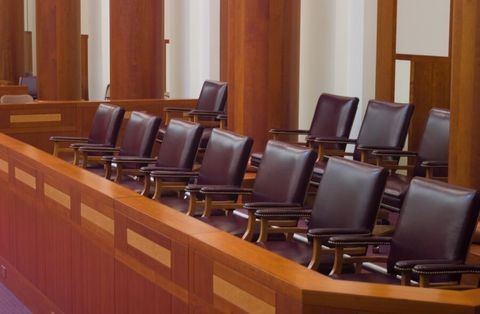CERCLA Litigation Watch: First Subsurface Intrusion NPL Site Listing Challenge Fails in the D.C. Circuit
Client Alert | 4 min read | 08.14.20
On July 28, 2020, in Meritor, Inc. v. EPA, No. 18-1325 (D.C. Cir.) the U.S. Court of Appeals for the D.C. Circuit denied a petition for review challenging EPA’s listing on the National Priorities List (NPL) of the first site listed due exclusively to the subsurface intrusion exposure pathway.
The Rockwell International Wheel & Trim site in Grenada, Mississippi is a manufacturing site with groundwater, surface water, and soil contamination. In September 2018, EPA listed the Rockwell Site on the NPL based solely on subsurface intrusion risks. 83 Fed. Reg. 46408 (Sept. 13, 2018) (Our earlier alert detailing this listing can be found here.) This listing (along with a second site) reflected the first application of an Obama Administration rule adding subsurface intrusion to the soil exposure pathway of the Hazard Ranking System (HRS) (40 C.F.R. Part 300, Appendix A), the scoring system for adding a site to the NPL.
Meritor, Inc., the current site operator, challenged the listing as arbitrary and capricious on three grounds: 1) that EPA failed to take into account the sub-slab depressurization system (SSDS) installed at the Site in the HRS scoring; 2) that EPA incorrectly applied residential, rather than industrial, health benchmarks in its calculations; and 3) that EPA incorrectly calculated the waste quantity. (Information regarding the petition can be found here.)
The D.C. Circuit rejected all of Meritor’s arguments, upheld the listing, and ruled as follows:
- EPA’s decision to use indoor air sampling results that pre-dated the installation of the SSDS was reasonable. The HRS considers mitigation measures only when evaluating the potential for exposure (HRS § 5.2.1.1.2), not if there has been an observed exposure (HRS § 5.2.1.1.1), and the potential for exposure is evaluated only if an observed exposure cannot be established. The court also found another HRS provision that references mitigation measures – determining the population within an area of contamination (HRS § 5.2.1.3.2.3 and Table 5-21) – irrelevant because EPA had not used this factor in its calculation.
- EPA’s use of a residential health benchmark in evaluating risks to individuals in the area was permissible, even at an industrial site, because the HRS instructs EPA to use “health-based benchmarks” as set out in HRS Table 5-20 and nothing in the HRS mentions or requires site-specific exposure assumptions, such as residential or industrial use. The court also pointed out that the HRS accounts elsewhere in its calculations for the lower exposure time for workers versus full-time residents. Finally, the court found that EPA has reasonable policy reasons for using residential exposure assumptions, such as favoring a more conservative approach at the listing stage.
- Meritor forfeited its arguments regarding EPA’s calculation of the waste quantity component of the subsurface intrusion pathway because Meritor did not sufficiently raise them with EPA during the NPL listing public comment period.
Beyond the implications for the Rockwell Site, the opinion raises serious concerns about the new subsurface intrusion component of the HRS and EPA’s use of it. As stated by EPA in its briefs, the NPL is a list of the sites with actual or potential hazardous substance releases “that pose the greatest relative risk to human health and the environment.” Not considering mitigation measures to place sampling data in perspective means that a site in which the exposure pathway has been controlled can still be deemed a risk under the HRS scoring, resulting in a site posing only a low risk nonetheless being placed on the NPL. This is contrary to Congress’s expressed intention for the NPL and a diversion of administrative resources away from sites deserving of increased agency oversight.
Similarly, the application of a residential health benchmark to an industrial site overestimates the risk. Particularly when a deed restriction has been placed on a property restricting it to non-residential use, the application of a residential exposure assumption to an industrial site is inapposite.
Major industry groups also expressed concern about the Rockwell Site listing, filing a joint amicus brief in support of Meritor and citing the adverse precedential impacts of EPA’s listing decision. The industry groups also emphasized that NPL listing creates the reputational stigma of being a “Superfund site.”
Companies with sites with potential or actual subsurface intrusion issues should be aware of this development and consider acting early in order to avoid a similar fate. EPA’s scoring of the Rockwell Site under the HRS may influence when, or if, a company installs a vapor intrusion mitigation system. And finally, the D.C. Circuit opinion is another reminder that, when it comes to preserving arguments, breadth and depth in comments submitted to an agency are key.
Yet, notwithstanding the foregoing, this opinion is a troubling harbinger of the increasing prominence of vapor intrusion into indoor air – whether originating from contaminated soil or groundwater - as a driving force behind agency action, at the federal level and for many states, as well.
Insights
Client Alert | 3 min read | 04.23.24
DOJ Promises NPAs to Certain Individuals Through New Voluntary Self-Disclosure Pilot Program
On April 15, 2024, the Acting Assistant Attorney General for the Criminal Division of the Department of Justice (“DOJ”) Nicole Argentieri announced a new Pilot Program on Voluntary Self-Disclosure for Individuals (“Pilot Program” or “Program”). The Pilot Program offers a clear path for voluntary self-disclosure by certain corporate executives and other individuals who are themselves involved in misconduct by corporations, in exchange for a Non-Prosecution Agreement (“NPA”). The Pilot Program specifically targets individuals who disclose to the Criminal Division at DOJ in Washington, D.C. information about certain corporate criminal conduct. By carving out a clear path to non-prosecution for those who qualify, DOJ has created another tool to uncover complex crimes that might not otherwise be reported to the Department.
Client Alert | 3 min read | 04.23.24
Client Alert | 5 min read | 04.23.24
Client Alert | 6 min read | 04.23.24




